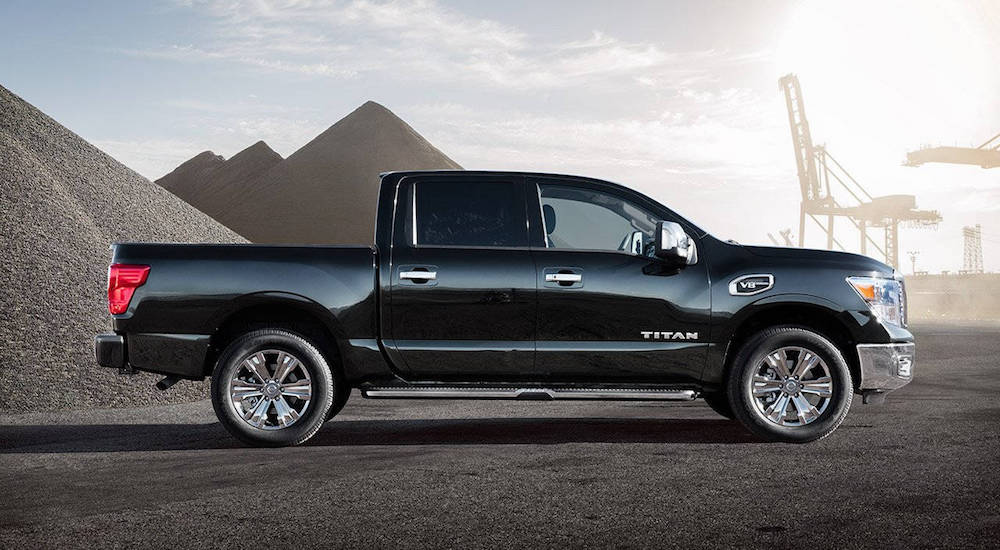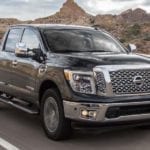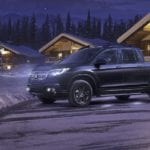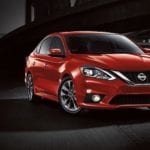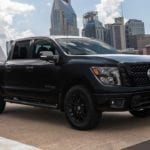If you’ve heard it once, you’ve heard it a hundred times: the truck marketplace is not what it used to be. Whether that stands as a good thing, or a bad thing (or falls somewhere in between) depends on your personal preferences. You may certainly prefer traditional American-built offerings, but the fact that you’re comparing offerings from Nissan and Honda would indicate a more open mind.
If so, you can count yourself among a growing number of Americans interested in alternative offerings. Since the mid-90’s we have seen a growing number of award-winning offerings from the likes of Nissan, Honda and Toyota, expanding our idea of what a truck could be. And with that in mind, let’s take a look at two very different takes on the ever-evolving truck, as seen in the 2017 Nissan Titan vs 2017 Honda Ridgeline.
Right off the bat, the 2017 Nissan Titan has been recognized as TruckTrend PickUp of the Year. Available in both rear-wheel drive and 4×4, the Titan offers a number of configurations. Depending on your needs, you can opt for a Single cab (with 8-foot 2.5-inch bed), King Cab or Crew cab (5-foot 7-inch bed) seating up to six. Ranging from work truck to luxury ride, there are five trim levels (S, SV, Pro-4X, SL and Platinum Reserve). And, should you prefer it, there is also the (gas or diesel) Titan XD. For the sake of this comparison, we’ll plan to focus on the 4×4 Titan SV Crew Cab (just one step above the “Work Truck” trim) at a starting MSRP of $41,400.
In the interest of keeping this comparison ‘apples-to-apples’ we’re going to measure it against the AWD Honda Ridgeline RTL Crew Cab, priced to start at $35,830. This is one of seven trim levels (RT, RTS, Sport, RTL, RTL-T, RTL-E and the Black Edition) which, on the Ridgeline, serve as the primary distinction between offerings, as opposed to cab and bed configurations.
Performance
As with all Titan offerings (except for the Cummins Diesel XD) the 2017 Nissan Titan SV is powered by a 5.6-liter V8 engine mated to a seven-speed automatic transmission. Rated for 390 horsepower and 394 lb-ft of torque, the Titan achieves an estimated 18 mpg combined (15 city, 21 highway). And properly equipped, the 4×4 can tow up to 9230 LBS with a 1610 LB max payload.
Check under the hood of the 2017 Honda Ridgeline RTL and you’ll find a 3.5-liter V6 paired to a six-speed transmission. This is the standard configuration for all Ridgelines, regardless of trim level. Rated for 280 horsepower and 262 lb-ft of torque, it is a more modest performer right out of the gate. That said, it’s less truck-like performance benefits its fuel economy, estimated at 23 mpg combined (26 highway, 19 city). Properly equipped, you can expect a 5000 LB towing capacity from the AWD Ridgeline, with a max payload of 1584 LBS.
In terms of overall drivability, there may be no comparison more subjective than a truck (in fact, any truck) measured up against a Ridgeline. While we’ll touch back on conceptualization and construction, the simple fact is that the Ridgeline is not designed to be a truck (in the traditional sense). The result of its unique design is that the Ridgeline drives more like a midsize crossover. A selling point to some, and a black mark to others, it comes down to personal taste.
That said, if we look on performance and capability alone, it’s an easy win for the Titan. Bigger engine, more power, better hauling and towing capabilities make it a no-brainer in a truck comparison. The possibility of plus 5 mpg and a smoother ride, aren’t enough to convince us otherwise. (1:0 Nissan)
Exterior Design
Normally, exterior designs come down to subjective opinions on aesthetics, but this one is bound to be different with inclusion of the Ridgeline. But we’ll get back to that…
The Nissan Titan is among our favorites, based solely on how it looks. From it’s distinctive front-end, to the rise of the sculpted hood, it stands apart from all other truck offerings. And with the various enhancements found in trim levels and add-on packages, it only gets better. In fact, in terms of looks alone, it stands just under the top of our list (behind RAM offerings).
The Ridgeline is another beast altogether. Some of you may recall the design of the original 2006 Ridgeline which met its goal of turning heads. Unfortunately, some of those heads were turning away from it, unsure of what to make of it. With its stubby nose, low-sloping fore and aft cabin, and short bed it was divisive to say the lease. Luckily, these design notes evolved under pressure and the 2017 re-release followed a more traditional styling. That said, still not enough for our liking.
However, the Ridgeline has a few tricks up its sleeve. No discussion of exterior would be complete without noting the Ridgeline’s two-way tailgate (opening out, or downward) and the inclusion of its in-bed trunk. The former provides convenient loading and unloading, while the latter is a welcome car-like inclusion for this car-like truck. There is also the benefit of its unibody construction, which enhances to cohesiveness of the frame, and overall ride quality.
That said, as worthy as those features are of recognition, it just isn’t enough to sway us. In terms of overall exterior design, the clear winner is the Titan. (2:0 Nissan)
Interior Design
Overall, it’s easy to figure out where this is going. If the Titan is built like a truck, looks like a truck and drives like a truck, it speaks to reason that the interior will be designed like that of a truck. If that is your expectation (along with the Ridgeline interior echoing crossover styling) well…you’d be right.
And the result is a divisive one. If you are looking for the functionality of a truck, but prefer a more car-like feel, the Ridgeline might be suited to you. But if you want a truck inside and out, the Titan wins without a doubt. Either way, the construction of both cabins are strong and make use of quality materials.
One are where the Ridgeline’s design is a plus, is in-cabin storage. A flat load floor is revealed by lifting the seating, as is ample under-seat storage.
In all fairness, this one is really too subjective. Let’s call it a tie, to be determined by preference. (3:1 Nissan)
Technology
The infotainment system for the Titan SV is built around a 5-inch (non-touchscreen) display and a six-speaker sound system. Bluetooth-enabled for both phone and audio, you can make use of CD, Auxiliary and USB input, or music streaming through Nissan Connect.
With the Ridgeline RTL, you receive a 5-inch (non-touchscreen) interface, linked to a rearview camera. Its seven-speaker sound system includes a USB port, and is Bluetooth-enabled (albeit only for phone).
While neither serves up a wealth of technology, the Titan offers more variety (4:1 Nissan) making this an easy win, overall.
Results
It’s important to reiterate that, depending on what you’re looking for in a truck, will determine whether the truck-like Nissan Titan or crossover-like Honda Ridgeline is right for you.
